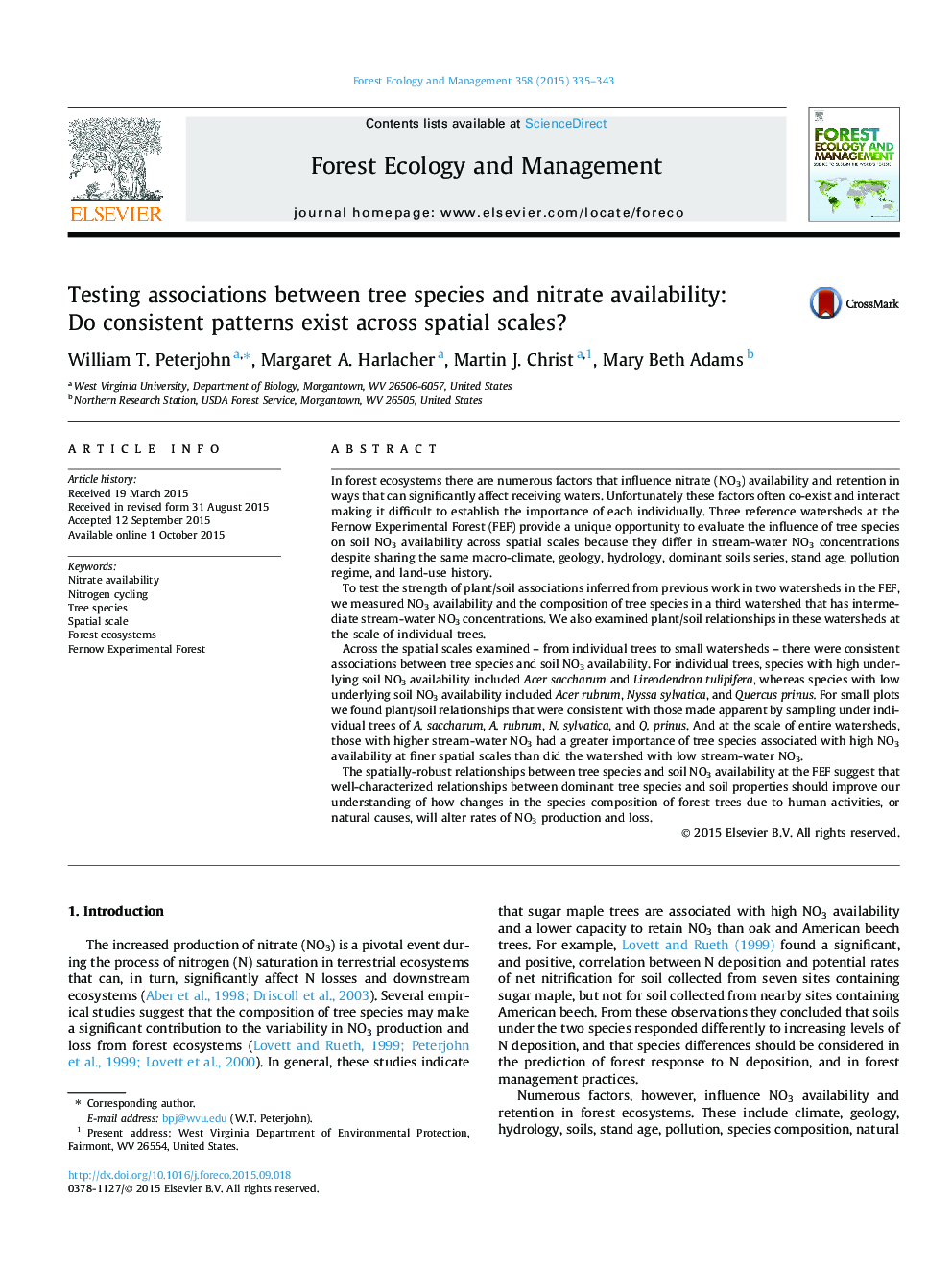| کد مقاله | کد نشریه | سال انتشار | مقاله انگلیسی | نسخه تمام متن |
|---|---|---|---|---|
| 86083 | 159163 | 2015 | 9 صفحه PDF | دانلود رایگان |
• We studied associations of tree species and NO3 availability across spatial scales.
• Sugar maple strongly correlated with more NO3 availability across spatial scales.
• Red maple strongly correlated with lower NO3 availability across spatial scales.
• Species-specific effects on soil C:N ratios may influence soil NO3 availability.
• NO3 availability in forests is associated with the mix of dominant tree species.
In forest ecosystems there are numerous factors that influence nitrate (NO3) availability and retention in ways that can significantly affect receiving waters. Unfortunately these factors often co-exist and interact making it difficult to establish the importance of each individually. Three reference watersheds at the Fernow Experimental Forest (FEF) provide a unique opportunity to evaluate the influence of tree species on soil NO3 availability across spatial scales because they differ in stream-water NO3 concentrations despite sharing the same macro-climate, geology, hydrology, dominant soils series, stand age, pollution regime, and land-use history.To test the strength of plant/soil associations inferred from previous work in two watersheds in the FEF, we measured NO3 availability and the composition of tree species in a third watershed that has intermediate stream-water NO3 concentrations. We also examined plant/soil relationships in these watersheds at the scale of individual trees.Across the spatial scales examined – from individual trees to small watersheds – there were consistent associations between tree species and soil NO3 availability. For individual trees, species with high underlying soil NO3 availability included Acer saccharum and Lireodendron tulipifera, whereas species with low underlying soil NO3 availability included Acer rubrum, Nyssa sylvatica, and Quercus prinus. For small plots we found plant/soil relationships that were consistent with those made apparent by sampling under individual trees of A. saccharum, A. rubrum, N. sylvatica, and Q. prinus. And at the scale of entire watersheds, those with higher stream-water NO3 had a greater importance of tree species associated with high NO3 availability at finer spatial scales than did the watershed with low stream-water NO3.The spatially-robust relationships between tree species and soil NO3 availability at the FEF suggest that well-characterized relationships between dominant tree species and soil properties should improve our understanding of how changes in the species composition of forest trees due to human activities, or natural causes, will alter rates of NO3 production and loss.
Journal: Forest Ecology and Management - Volume 358, 15 December 2015, Pages 335–343
